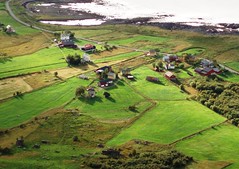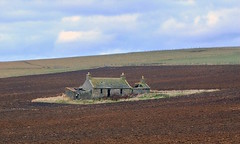nick wright planning
NEWS
beyond windfarms & biodiversity | a new future for rural planning?
By Nick Wright
on April 17, 2012
all posts
 Reforms to the Scottish planning system mean that local authorities up and down the country are getting to grips with new ways of preparing future plans for their areas. We’re saying goodbye to the old system of producing a draft plan and asking people what they think of it – usually to be met with either deafening silence or a wall of hostility. Instead, the new system requires Councils to first produce a “Main Issues Report” – a document which asks people what issues they want the plan to tackle, and which must (by law) give the Council’s preferred options for dealing with each issue.
Reforms to the Scottish planning system mean that local authorities up and down the country are getting to grips with new ways of preparing future plans for their areas. We’re saying goodbye to the old system of producing a draft plan and asking people what they think of it – usually to be met with either deafening silence or a wall of hostility. Instead, the new system requires Councils to first produce a “Main Issues Report” – a document which asks people what issues they want the plan to tackle, and which must (by law) give the Council’s preferred options for dealing with each issue.
Many Councils up and down the country are in the throes of producing their first “Main Issues Reports” at the moment. Some are taking the opportunity to talk to local communities before they even produce those reports, effectively asking people what they want the Main Issues Report to focus on – be it housing, transport, jobs, health or whatever. I think this is a good way of making sure that the Main Issues Report concentrate on issues which are important to local communities, as I wrote recently in Neighbourhood Planning Plus.
East Lothian Council has been doing some innovative work in the last few months, working with Planning Aid for Scotland to organise a series of ten discussion events to inform their Main Issues Report, which is due to be published later this year. I was involved in running a number of these workshops. It’s fair to say that they were largely focussed on the future of East Lothian’s urban areas, from Musselburgh in the west to Dunbar in the east.
As well as its towns, East Lothian has a rich and diverse rural area, including some of Scotland’s richest agricultural land, all on the doorstep of the country’s capital city. What should the Main Issues Report say about the future of these rural areas?
Respected Haddington-based surveyors Chalmers and Co, perhaps spotting the need to answer this question, recently arranged a “Question Time” discussion in the wonderful surrounds of Winton House, Pencaitland. Energised and informed by a range of speakers covering agriculture, politics, planning and renewable energy, a packed house debated the future of East Lothian’s countryside.
 It was clear from the discussion that East Lothian’s position as one of Scotland’s most prosperous and productive rural areas, and its proximity to Edinburgh, are both a blessing and a curse. A blessing because there is likely to be better access to finance and decision-makers than poorer rural areas ; and a curse, or more appropriately a challenge, because development pressure, high land values and the sensitive nature of the countryside are inevitably coupled with strong views about change.
It was clear from the discussion that East Lothian’s position as one of Scotland’s most prosperous and productive rural areas, and its proximity to Edinburgh, are both a blessing and a curse. A blessing because there is likely to be better access to finance and decision-makers than poorer rural areas ; and a curse, or more appropriately a challenge, because development pressure, high land values and the sensitive nature of the countryside are inevitably coupled with strong views about change.
In recent decades, I would argue that planning policy for high quality countryside near our cities – across the UK, not just in East Lothian – has put greater emphasis on conserving aesthetic and biodiversity qualities, at the expense of thinking about long term economic and social strategies which could ensure that countryside and villages are not simply about subsidised farming and attractive commuter and retirement homes. That may sound blunt, but I don’t think it’s far off the mark. Tacitly, national and local policy has conserved that rather British idea of well tended countryside with attractive villages – a bucolic ideal which might sound timeless, but is in reality a twentieth century construct.
I’m not sure this vision of the countryside is an entirely helpful one for the future. As EU farming subsidies wane and fuel costs increase, do we not need to plan for new ways of our countryside being more productive and a place to invest and innovate, as it was during the heyday of the eighteenth century Agricultural Revolution? And is this not what the Scottish Government is encouraging us all to do in Getting the best from our land – a land use strategy for Scotland?
 This is not simply about letting rip with a rash of new windfarms and suburban development in the countryside. What I’m suggesting is a new paradigm for rural development, based on encouraging local creativity and entrepreneurship, communities where people can afford to live, where it’s easy to set up a business, where new community-based development is genuinely welcomed, and where sustainable rural businesses are as likely to be about IT, tourism or renewable energy as about livestock and crops. In other words, a new paradigm which acknowledges the need for the countryside to be attractive and ‘biodiverse’, but which sees those objectives as part of a much bigger picture – a picture which is about developing long term sustainable rural communities and land management.
This is not simply about letting rip with a rash of new windfarms and suburban development in the countryside. What I’m suggesting is a new paradigm for rural development, based on encouraging local creativity and entrepreneurship, communities where people can afford to live, where it’s easy to set up a business, where new community-based development is genuinely welcomed, and where sustainable rural businesses are as likely to be about IT, tourism or renewable energy as about livestock and crops. In other words, a new paradigm which acknowledges the need for the countryside to be attractive and ‘biodiverse’, but which sees those objectives as part of a much bigger picture – a picture which is about developing long term sustainable rural communities and land management.
To my mind, these are the main issues that planning policy in Scotland’s lowland countryside needs to tackle. I sincerely hope that Main Issues Reports, in East Lothian and other rural authorities, take the debate beyond aesthetics and biodiversity to embrace the issues put forward in the government’s Land Use Strategy.